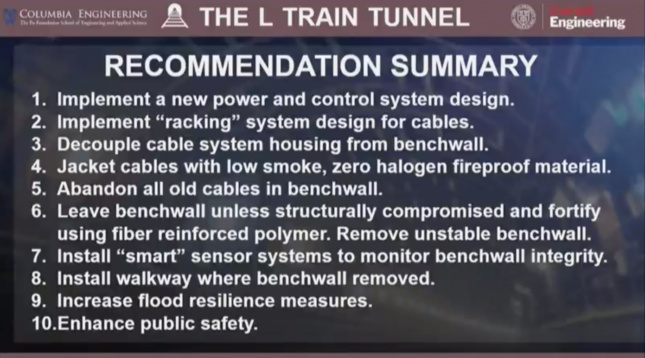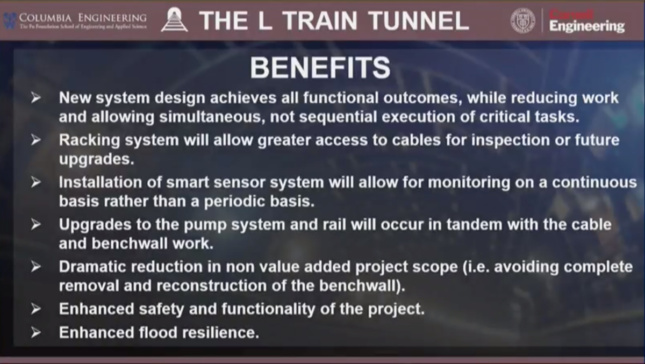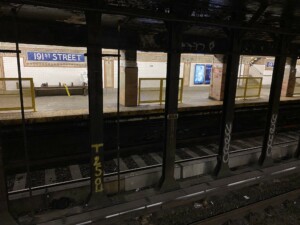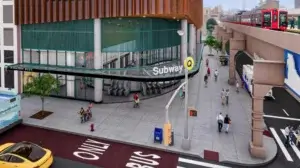At a 12:45 p.m. press conference Thursday afternoon, Governor Andrew Cuomo unveiled plans to prevent the 15-month-long L train shutdown that was set to begin on April 27.
Seated between a panel of engineering experts from Cornell and Columbia Universities and representatives from the Metropolitan Transportation Authority (MTA), Cuomo repeatedly touted the innovative nature of the proposed solution—as well as his success in building the new Mario Cuomo Bridge.
After Hurricane Sandy struck New York City in 2012, the Canarsie Tunnel that runs between Manhattan and Brooklyn was flooded with salt water. The L line, which ferries 250,000 riders a day between the two boroughs, still requires extensive repairs to fix the corrosion caused by the storm. The concrete bench walls lining the tunnel were damaged, as were the wires and other electrical components embedded behind them.

The MTA was scrambling to implement alternatives for commuters, including turning an east-west stretch of Manhattan’s 14th Street into a dedicated bus lane, but it now looks like the planning was for naught. The new scheme presented by Cuomo, a joint effort between the governor’s engineering team, WSP, Jacobs Engineering Group, and the MTA, restricts the slowdowns to nights and weekends.
Instead of removing and rebuilding the tunnel’s bench wall, and the components behind it, only the most unstable sections will be removed. Then, a fiberglass wrapper will be bonded to the tunnel’s walls via adhesive polymers and mechanical fasteners. A new cable system will be run on the inside of the tunnel via a racking system and the old wiring will be abandoned. New walkways will be added to the areas where the bench walls have already been or will be removed. Finally, a “smart sensor” network of fiber-optic cables will be installed to monitor the bench wall’s movement and alert the MTA to potential maintenance issues.
Governor Cuomo hailed the move as innovative, saying that this cable racking system was commonplace in European and Chinese rail projects but that this would be the first application in America. He also claimed that the fiberglass wrapping would be a “structural fix”, not just a Band-Aid, and that it was strong enough to hold the new Mario Cuomo bridge together. To increase the system’s sustainability, floodgates would be added to the First Avenue station in Manhattan and the Bedford Avenue station in Brooklyn.

After the presentation was complete, Cuomo passed the microphone to MTA acting chairman Fernando Ferrer, who said that the agency would be implementing the changes immediately. Still, skepticism over whether the MTA would be able to implement the plan quickly bubbled up from the members of the press in attendance and on social media. Because this method of tunnel repair has thus far been untested in the U.S., the question of whether the MTA would be able to find skilled workers to implement the plan was raised. Cuomo, for the most part, brushed the concerns off, claiming that each piece of the repair scheme has been conducted individually before.
MTA Acting Chairman Ferrer: “Why wasn’t this approach considered earlier?” Because the process had never been applied to a rehabilitation project. In other words, the MTA is extremely unimaginative? Such a rehab project has never been needed afaik, period pic.twitter.com/XctpO6tLW9
— Market Urbanism (@MarketUrbanism) January 3, 2019
If the L train repair plan proceeds as scheduled, one track at a time will be shut down on nights and weekends for up to 20 months. To offset the decrease in service, the MTA plans on increasing service on several other train lines, including the 7 and G.











